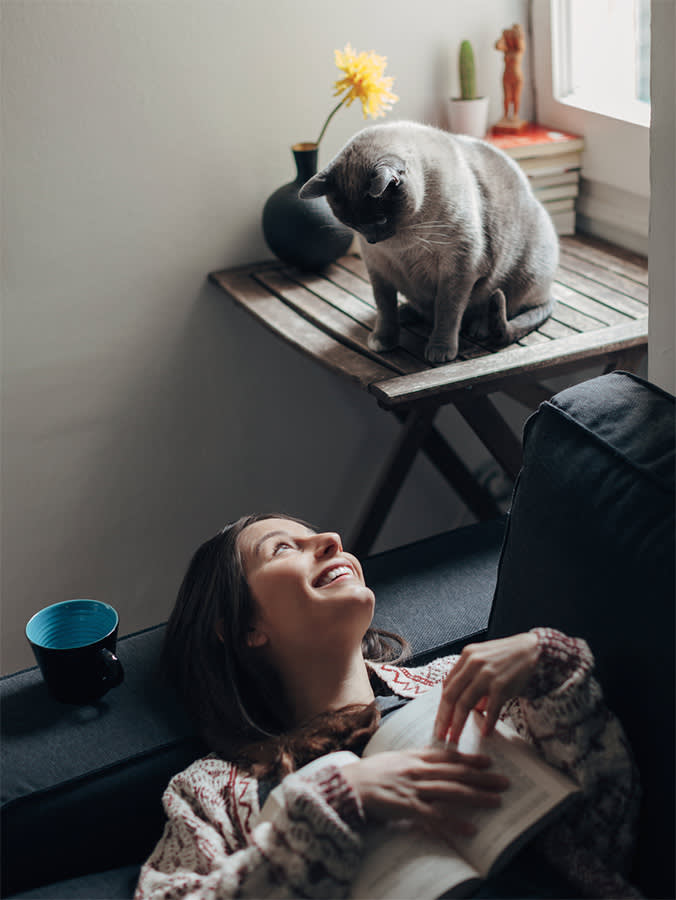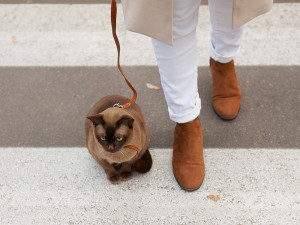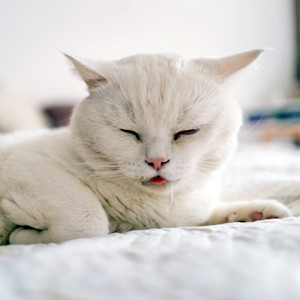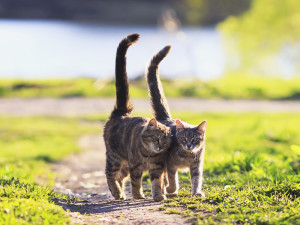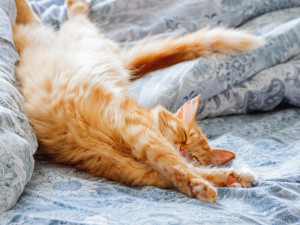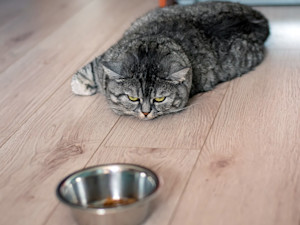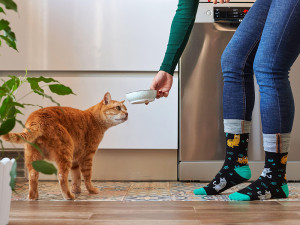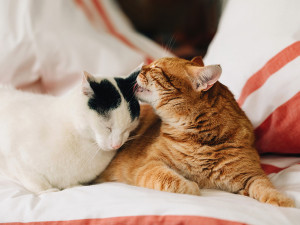“Kitty Language” Is the Book You Need to Finally Decode Your Cat
The author and artist uses informative (and adorable) images to teach cat parents everything about kitty communication
Have you ever wondered if you could have a guide to understanding your cat? Like, when your cat plays with another cat, are they being friendly, or is this a rumble? Or why do they stare at you, seemingly unblinking, for several minutes? Maybe you’re a new cat parent, and you’re suddenly wondering: “Why do they do anything they do, and what are they trying to tell me?“
Kitty Language: An Illustrated Guide to Understanding Your Catopens in new tab by Lili Chin is a long-anticipated book that professionals in every career related to cats and plenty of cat parents, too, will soon be poring over, discussing, enjoying, relishing and recommending.
This book has what you need to understand your cat
Rarely does a book improve our relationship with our cats (and, as a result, improve both their quality of life and our own), but Kitty Language does so, to the benefit of all people and their cats. As Chin writes at the start of Kitty Language: “Learning to recognise cat body language is about observing movements in context and understanding the connection between behaviour and the bigger picture.”
Her point is so important because to really understand any animal, including cats, means learning about more than just what movements and positions of specific parts of the body indicate an emotion or behaviour. Luckily for us, it’s clear she speaks the truth when she says: “I enjoy learning about different species’ behaviour so it’s fun for me.”
In fact, Chin had to learn a lot about cats to write and illustrate this book, and she went all in: “In 2021, we adopted two cats. My dog, Boogie, died at the end of 2020, and I wasn’t ready to adopt a dog and replace Boogie. My husband is a cat guy, so we adopted a bonded pair – Shimmy and Mambo. I also did a lot of research with books, videos and experts.”
Chin tells The Wildest the research process for this book was not easy: “There are not a lot of resources on cat behaviour compared to what’s available about dog behaviour and body language, especially visual resources. There’s a lot of amazing written materials, but not a lot of pictures. I had to dig around a lot for pictures of cats. I searched for things like ‘stressed photos of cats’ but 90 percent of those were not stressed.��”
Although sources were hard to come by, Chin figured out lots of ways to get what she needed. “A lot of the cats in the book are my friends’ cats, but because of the pandemic I didn’t meet them,“ she says. “People generously sent pictures and videos of their cats, and now they are in the book.” Many of the resources (beyond her friends’ cats!) that she found most helpful are in the resources section hereopens in new tab.
And you get helpful visual aids
As an artist’s approach to understanding cats (with a lot of input from scientists!), Kitty Language is primarily visual. We humans are a visual species, so pictures that visually represent cat behaviour allow us to learn about cats more easily. The drawings are informative and so cute (I cannot emphasise enough how cute they are!) – truly the most wonderful combination of accurate and whimsical.
I absolutely adore that Chin focuses on the whole body, the context and a deep understanding that every cat is an individual. Because I am an animal behaviourist, she is truly speaking my language here. There is no direct translation that can automatically declare exactly what everything a cat is doing or expressing means, but there are many clues that apply in most cases.
Throughout the book, the emphasis is on how the cat may be feeling, related to and based on visual signals and other forms of communication. That is true in the section about scent, which is so key for cats and which I was delighted she included. After scent, the organisation of the book is by body part, so that the movements and actions of ears, eyes, whiskers, tail and so on (and what they probably mean), is covered in detail, but always in the context of the whole body and the situation.
In addition to explaining and illustrating body language through the actions of various parts of the body, the book covers so much more that’s helpful for understanding our cats. There are drawings and text about posture that note signs of being extra relaxed with an open body, and details about the significance of both smoothness and confidence of movement.
You’ll become an expert at understanding cat play
Anyone seeking to gain a better understanding of cats will be interested in their repertoire of vocalisations, signs of friendliness and how to detect conflict or stressed behaviour. Maybe most popular will be the section on play, which offers insights into distinguishing both play hunting behaviour and social play from fighting, as they are not so different that it’s easy to tell them apart in all cases. Chin enjoyed this section, too, noting that: “Drawing cats wrestling was fun. I have a thing for drawing animals wrestling!”
“I didn’t find any particular illustrations harder to do than any other,” Chin says. “They were all hard because it was hard to find visual reference material. I had less than a year, maybe six months, to do the book. I hope it opens discussions about cat behaviour and the need for more resources.”
A talented artist, Chin is best known in the fields of animal training and animal welfare and is also the author of the award-winning and best-selling Dopens in new tab oggie Language: A Dog Lover’s Guide to Understanding Your Best Friendopens in new tab. It takes highly skilled observational skills (and obviously patience) to share the essence of cats in all the glorious detail that’s hard to see at the full speed of real life.
I’ve been working with cats for decades and I still learned from Lili Chin’s marvellous drawings and her ability to capture the big picture and all the little details that make up that big picture. If you want to better understand the feelings and behaviour of your cat, Kitty Language is an essential book to have, read and enjoy.
